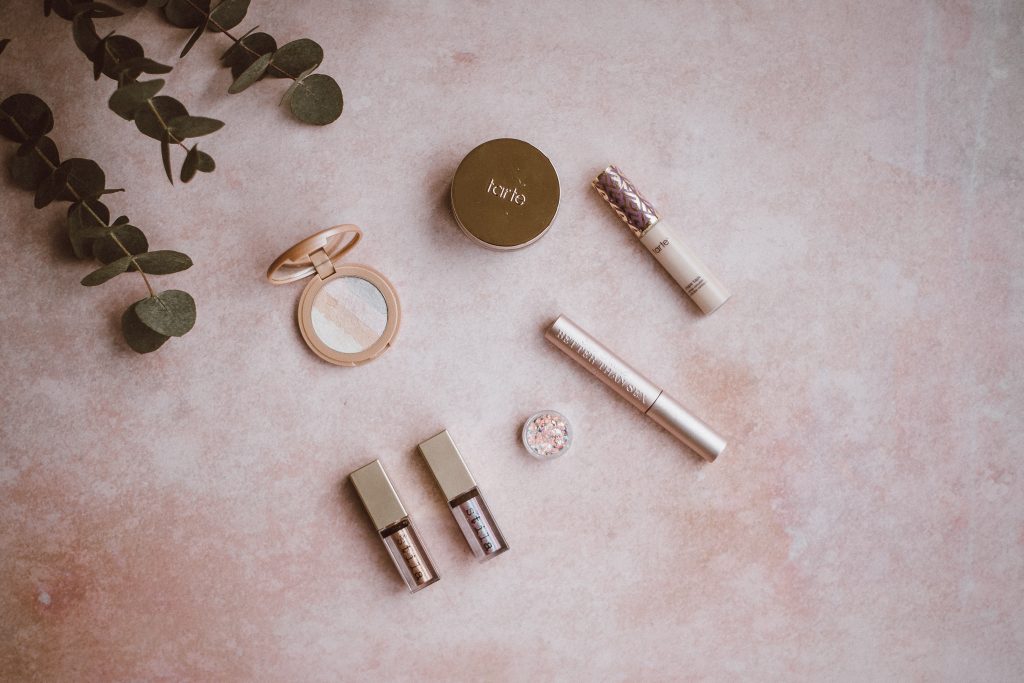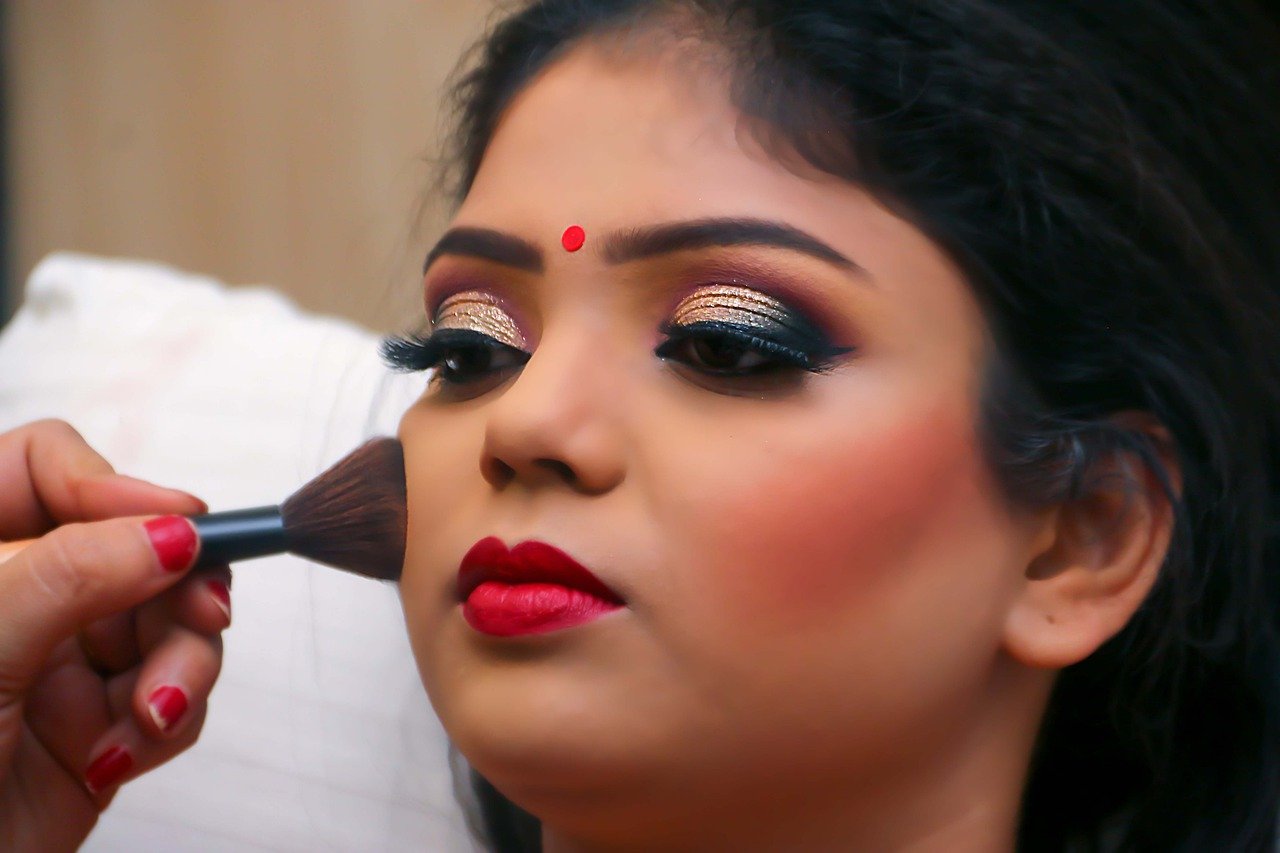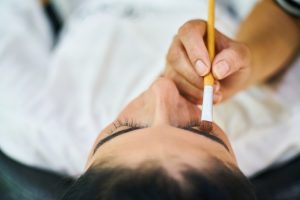Priyanka Dhakal, 21, of Bhaktapur, does not mind being called a makeup maniac. “I began using makeup to build up confidence, but gradually, that turned into a passion. Now, I can’t do without makeup, I wear it every day.”
Dahal says she uses eyeliner, powder, and lipstick from very high-end brands such as L.A. Girl and Malini and considers herself a conscious consumer. “While purchasing any makeup products, I check the manufacturing and expiring dates.”
However, experts say her consciousness about checking details of the products is not enough for many makeup products have various substances such as paraben and lead that are harmful to health which the consumers fail to notice. “I rarely check the label, especially the ingredients with which the product is made,” says Dhakal. “I have heard a lot about the lead and its impacts. However, I really don’t know what impacts it actually causes on human health.”
Like Dahal, many makeup lovers and consumers are not aware of the gravity of the health problems that lead found in cosmetics products like lipstick, eyeliner and mascara can bring to the human body.
The health hazards caused by the absorption of lead used in makeup products range from impacting the general health to the nervous system and can lead to death, inform the findings of various researchers and health experts. With makeup being a part of daily life for millions, it is high time the nation paid attention, they suggest.
The deceiving aesthetics
In modern times, lead is used in cosmetics products like whitening powder, hair dye, lipstick, foundation, and many others.
Environmental scientist Ram Charitra Sah, the author of Poisonous Cosmetics: the Problem of Lead in Lipstick in Nepal and the executive director at Center for Public Health and Environmental Development (CEPHED), informs lead affects the health of people in all age groups.

As per Sah, exposure to lead causes the most harm in pregnant women and breastfeeding women. “If her body is contaminated with lead, it goes to the baby growing inside her womb and the baby she is feeding milk to and impacts their memory power, studying, and writing skills,” Sah describes, “Further, from her general health to the reproductive system and intergenerational issues, all are badly impacted by the consumption of lead.”
He warns, “Extreme exposure to lead can also cause death.”
Therefore, standards have been set to use the permissible amounts of lead used in cosmetics, informs Dr Laila Lama Tangbetani, a dermatologist and cosmetologist at Nepal Skin Care Centre. “But, if the lead incorporated in the cosmetic products is more than the permissible amount and more than our body can resist, there is the chance of lead poisoning.”
Yet, Lama says there is very little possibility of lead poisoning through the use of cosmetics in today’s scenario owing to such standards. However, back in the 16th/17th century, when there was not much knowledge of lead poisoning, there had been incidences of people’s death due to the appliance of cosmetics having an excessive amount of lead. The reason for the death of Queen Elizabeth I is speculated to be from lead poisoning.
“When lead gradually starts being accumulated in the body, it starts affecting different systems of the body. It majorly harms the central nervous system (brain and nerves). Alongside this, it also affects the growth of teeth, bone, and blood,” Lama informs.
In addition, lead makes the skin dry and damages it, making the hair brittle and grey. Internally, it hampers the growth of teeth, bone, induces anaemia, gradually affects nerves and makes the personality irritable, brings changes in their mood and personality and slowly they might suffer from amnesia, according to Lama.
Children at the receiving end
Children below the age of six are also among the most vulnerable to lead poisoning as the consumption or exposure of lead largely hampers the growth of the nervous system and intellectual capability of the children. Consequently, this hampers the overall potential of the children till life-long, according to Sah.
However, Dr Lama thinks lead poisoning in children through the use of cosmetics is somehow irrelevant as they do not usually use cosmetics. But, as most parents apply kajal to the baby and if that kajal contains a high amount of lead oxide, there is the chance of lead poisoning.
Yet, she agrees that lead is harmful. She further explains lead has been used in cosmetics not only in this contemporary world but since a long time back, as early as the 16th century, and it is used in other items used in daily life also. “In the case of Nepali children, the main source of lead poisoning can be the use of bright-coloured toys especially when they put it in their mouth,” she informs.
Growing risks

There have been cases of lead poisoning through the use of homoeopathic medicine also. In terms of the major source of lead poisoning in the world, cosmetics do not come in the number one list. Its major source is occupational exposure; people who work in factories using lead are more prone to lead poisoning, explains Lama.
“On the other hand, even a decade ago, people did not wear this much makeup or use cosmetics as people are using nowadays in Nepal. So, in the context of Nepal, the impact of lead used in cosmetics was not an issue back then.”
She then adds, “But, in recent times, when the habits of people are changing as they are wearing heavy makeup daily, when they are using whitening cream, lipstick every day, the concerns of lead poisoning through cosmetics is growing.”
Meanwhile, both Sah and Lama warn that the impacts of the lead used in cosmetics depend on how frequently you use, the quantity you use and the amount of lead used in the products.
Need for consumer education and monitoring
While doing many campaigns for safe cosmetics/ lead-free cosmetics since 2012, the Nepal Bureau of Standard and Metrology (NBSM) under the Ministry of Industry, Commerce and Supplies (MoICS) has enacted three sets of standards for different groups of cosmetics.
With that, awareness is relatively increasing among the cosmetics consumers, observes Sah. “But, the sad part is the regulatory body is ineffective in implementing and monitoring the parameters. Also, the parameters are volunteering as of now, but it is high time that it should be made mandatory.”
Meanwhile, many consumers in Nepal cannot distinguish between original and fake. But, it does not matter in terms of lead poisoning. Whether you are using a high-end brand or normal, cheap product or expensive one, each of them has lead amount more than permitted in their products, according to Sah.
However, Lama believes world-renowned brands keep the amount of lead minimum.
Nonetheless, Lama also adds, “There should be market monitoring of all the cosmetic products and if the product exceeds the permissible amount of lead, the use of such cosmetics should be restricted, especially now when people use daily heavy makeup.”
Now, back to Priyanka Dhakal, the lady who opened this story. “If only I had known all these facts and impacts, I would have opted for lead-free makeup a long time back,” she says, “I could not think that something we apply to our skin can impact other body organs and systems except the skin. But it is never too late to start any good thing.”





















